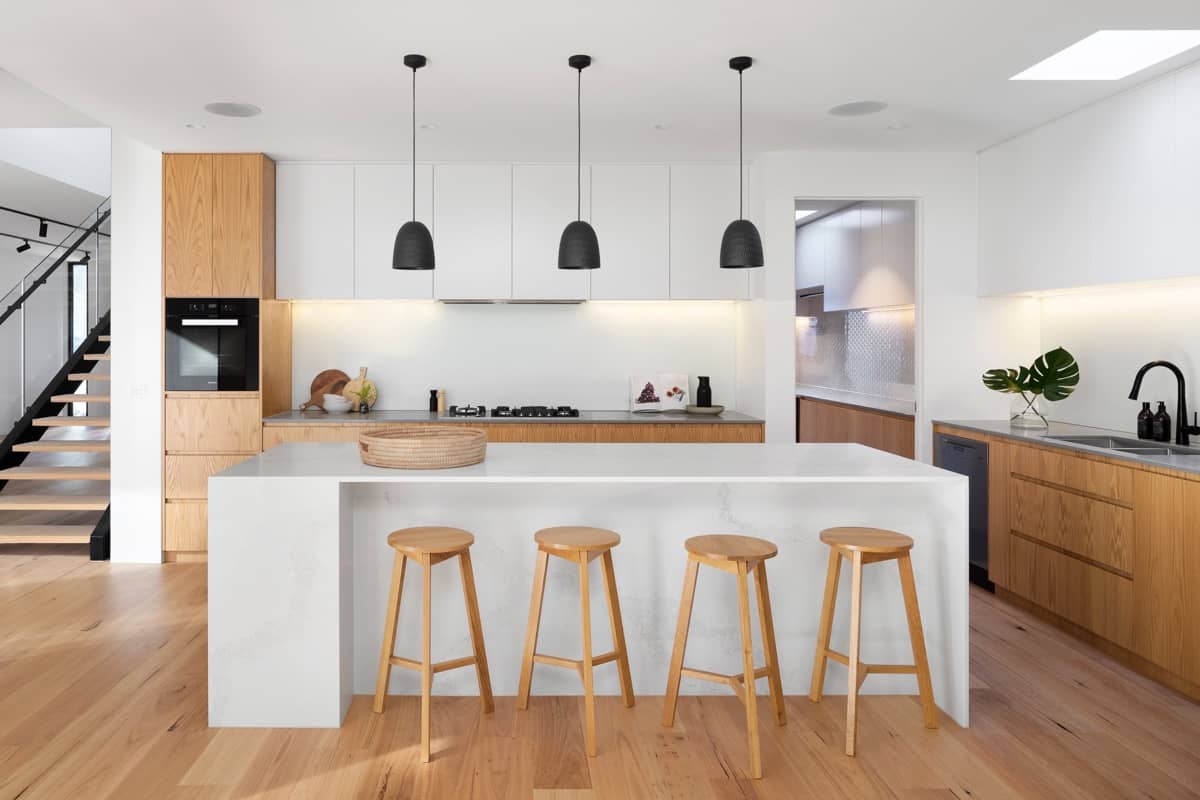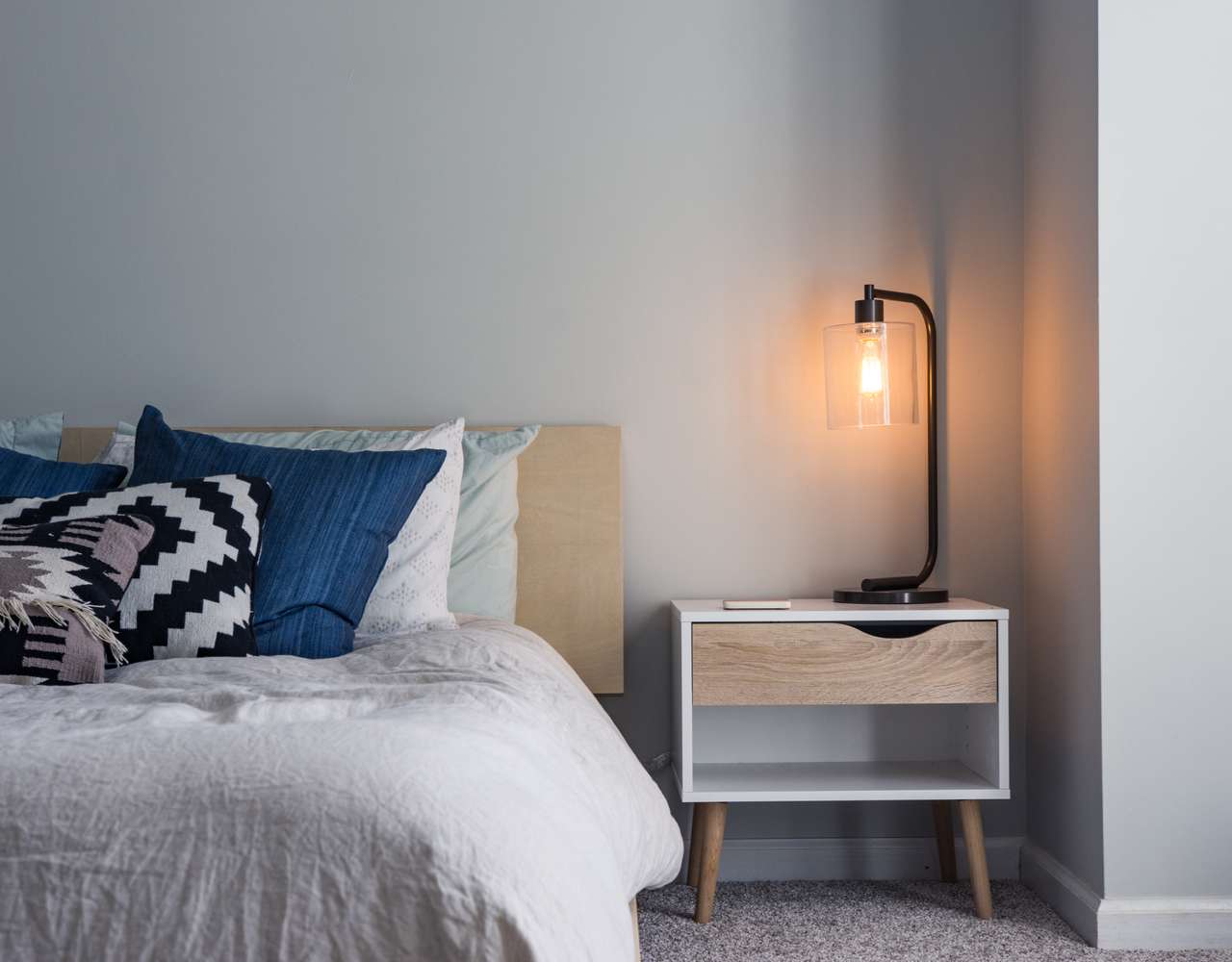In today’s fast-paced and digitally-driven world, a significant number of professionals are now working from the comfort of their own homes. As the boundaries between personal and professional spaces blur, it becomes essential to create a conducive environment that promotes productivity and well-being. One often overlooked aspect of an ideal home office setup is proper lighting.
Lighting plays a pivotal role in shaping our mood, focus, and overall performance. Therefore, selecting the right lighting solution is crucial for establishing an optimal workspace.
Importance of lighting in a home office
The significance of adequate lighting in a home office cannot be overstated. A well-lit workspace not only enhances visual clarity but also affects our physiological and psychological aspects, ultimately impacting productivity levels. Insufficient or poorly executed lighting can lead to eye strain, headaches, fatigue, and decreased concentration.
On the other hand, strategic illumination can boost energy levels, promote alertness, reduce eye discomfort, and positively impact mood. Creating an inviting ambiance through balanced lighting encourages creativity and keeps one engaged throughout the workday.
Furthermore, proper lighting ensures increased safety by reducing the risk of accidents or tripping over objects in dimly lit areas. Considering all these factors collectively highlights why investing time and effort into selecting suitable light fixtures for your home office is an absolute must.
Advantages of LED lights over traditional lighting options
When it comes to choosing the right light source for a home office environment, LED lights emerge as an ideal choice due to their numerous advantages over traditional options like incandescent or fluorescent bulbs. Firstly, LED lights are highly energy-efficient compared to their counterparts. They consume significantly less electricity while providing equivalent or even superior illumination levels.
This translates into considerable cost savings on electricity bills over time. Secondly, LED lights have an incredibly long lifespan compared to traditional bulbs.
With an average lifespan ranging from 25,000 to 50,000 hours, LEDs outperform incandescent bulbs by several orders of magnitude. This longevity not only reduces maintenance costs but also decreases the frequency of bulb replacements, making LED lights a practical and hassle-free lighting solution.
Moreover, LED lights do not emit excessive heat like incandescent bulbs, making them safe to use and reducing the strain on air conditioning systems. This characteristic is particularly advantageous in small home office spaces where temperature control is essential for comfort and focus.
LED lights are available in a wide range of color temperatures, from warm to cool tones. This versatility allows users to customize their lighting environment based on personal preference and specific task requirements.
Whether one desires a cozy and soothing ambiance or a bright and vibrant workspace, LED lights can cater to varied needs effectively. Lighting plays a vital role in establishing an optimal home office environment that fosters productivity and well-being.
By opting for LED lights over traditional lighting options, one can harness numerous advantages such as energy efficiency, extended lifespan, reduced maintenance costs, improved safety measures, and customizable illumination settings. The subsequent sections of this article will delve deeper into various factors to consider when choosing the best LED lights for your home office setup.
High-Level Overview of LED Lights
Definition and Working Principle of LED Lights
LED stands for Light Emitting Diode. It is a semiconductor device that emits light when an electric current passes through it.
Unlike traditional incandescent or fluorescent bulbs, which rely on heating a filament or gas to produce light, LEDs operate based on the principle of electroluminescence. Electroluminescence is the process by which light is emitted from a material when it is stimulated by an electric current.
In LED lights, this occurs within a semiconductor material known as a diode. When an electric voltage is applied across the diode, electrons and holes (positively charged areas) are injected into the material.
As these charge carriers recombine, energy is released in the form of photons, which are packets of light. LED lights consist of several layers within their structure.
The two main layers are made from different types of semiconducting materials: one layer contains excess electrons (N-type), while the other contains an excess of holes (P-type). The junction between these two layers forms what is called a P-N junction.
When a forward voltage (positive to negative) is applied to the P-N junction, electrons from the N-type layer move towards the P-type layer and recombine with holes. This recombination process releases energy in the form of light, resulting in visible illumination.
Key Benefits of Using LED Lights in a Home Office Setting
LED lights offer several advantages that make them highly suitable for home office environments: 1. Energy Efficiency: LED lights are incredibly energy-efficient compared to traditional lighting options such as incandescent bulbs or fluorescent tubes. They convert nearly all supplied electrical energy into light while generating minimal heat waste.
This efficiency translates into significant cost savings on electricity bills over time. 2. Longevity: LEDs have impressive lifespan, often lasting 25 times longer than incandescent bulbs and up to 10 times longer than fluorescent tubes.
This extended lifespan reduces the need for frequent replacements, saving both time and money in the long run. 3. Instant On/Off: Unlike certain types of lighting that require a warm-up period, LEDs provide instant and full brightness as soon as they are switched on.
This feature is particularly useful in a home office setting where immediate illumination is essential for productivity. 4. Directional Lighting: LED lights emit light in a specific direction, making them highly suitable for task-oriented lighting.
They can be easily directed towards specific work areas, minimizing glare and reducing eye strain during focused tasks like reading or computer work. 5. Eco-Friendly: LED lights are environmentally friendly due to their energy efficiency and lack of harmful substances such as mercury, which is found in fluorescent bulbs.
By using LEDs in your home office, you contribute to reducing carbon emissions and promoting sustainability. LED lights offer an innovative and efficient lighting solution for home office environments.
Their working principle based on electroluminescence ensures superior energy conversion while providing numerous benefits such as long lifespan, instant on/off capability, directional lighting, and eco-friendliness. Embracing LED technology can enhance the ambiance of your work area while also contributing to cost savings and environmental responsibility.
Factors to Consider When Choosing LED Lights for Home Office
Brightness and Color Temperature Options
When selecting LED lights for your home office, it is crucial to consider the brightness and color temperature options. The appropriate brightness level is essential to maintain a well-lit workspace that promotes productivity while preventing eye strain.
For tasks such as reading, writing, and computer work, it is recommended to have different levels of brightness. Reading requires a higher brightness level to ensure clarity, around 500-800 lumens.
Writing can be comfortably done at around 400-600 lumens, while computer work may require a slightly lower level of around 300-500 lumens. Color temperature plays an equally significant role in creating the right atmosphere in your home office.
LED lights offer various color temperature options ranging from warm (2700K-3000K) to cool (5000K-6500K). Warm light creates a cozy and relaxing ambiance that can enhance focus during extended work sessions.
On the other hand, cool light mimics natural daylight and promotes alertness and concentration. Understanding these differences allows you to choose the most suitable color temperature for your specific needs.
Energy Efficiency and Cost Savings
LED lights are renowned for their energy efficiency compared to traditional lighting options such as incandescent or fluorescent bulbs. LEDs consume significantly less electricity while providing the same or better illumination levels. For example, an LED bulb may use only 10 watts of power compared to an incandescent bulb that consumes 60 watts for similar levels of brightness.
This energy-saving characteristic translates into substantial cost savings over time. By switching to LEDs in your home office, you can reduce your electricity bills by up to 70%.
Moreover, LEDs have an impressive lifespan that far surpasses traditional bulbs. With their average lifespan of around 50,000 hours compared to incandescent bulbs’ mere 1,000 hours, LEDs require less frequent replacement, leading to reduced maintenance costs in the long run.
Dimming Capabilities and Adjustable Settings
The ability to adjust the brightness and color temperature of LED lights in your home office is crucial for creating a customized and comfortable environment. Dimming features provide flexibility in setting the lighting level according to your preferences or task requirements. This functionality allows you to create a suitable ambiance for different activities, such as soft lighting for relaxation or brighter illumination for focused work.
Additionally, some advanced LED lights offer adjustable color temperature options. This feature enables you to fine-tune the lighting conditions based on your personal comfort during extended work sessions.
For instance, you might prefer warmer light in the mornings for a more soothing atmosphere and cooler light during late hours when increased alertness is desired. These adjustable settings provide versatility and adaptability to cater to your specific needs throughout the day.
By carefully considering these factors when selecting LED lights for your home office, you can create an optimal working environment that enhances productivity while ensuring energy efficiency and cost savings. The brightness level suited for each task, understanding color temperature’s impact on mood and focus, as well as the convenience of dimming capabilities and adjustable settings all contribute to a workspace that promotes both comfort and efficiency.
Types of LED Lights for Home Office Use
Desk Lamps
When it comes to illuminating your home office, a desk lamp is an essential lighting fixture that provides focused and adjustable light. When choosing a desk lamp, there are several features you should keep in mind. Firstly, an adjustable arm is crucial as it allows you to direct the light precisely where you need it most.
This flexibility ensures optimal lighting for different tasks throughout the day, such as reading documents or working on your computer. Additionally, a swivel head is beneficial as it enables you to change the direction of the light beam without adjusting the entire lamp’s position.
Another important feature to consider in a desk lamp is touch controls. With touch-sensitive controls, you can easily adjust brightness levels and switch between different color temperatures with just a tap or swipe of your finger.
This convenience eliminates the hassle of searching for physical buttons or switches, providing seamless control over your lighting experience. Now let’s delve into some of the top-rated desk lamps available on the market.
The XYZ Desk Lamp offers exceptional versatility with its 360-degree adjustable arm and swivel head design. It boasts four different color temperature modes ranging from warm white (2700K) to cool daylight (6500K), allowing for customizable illumination based on your preference and task requirements.
Additionally, this sleekly designed lamp features touch-sensitive controls with easy-to-read indicator lights. Another highly recommended option is the ABC LED Desk Lamp which combines functionality with style effortlessly.
With its flexible gooseneck design, this lamp offers maximum adjustability while maintaining stability during use. It offers five brightness levels and three color temperature options (warm white, natural white, and cool white) that can be easily adjusted through touch controls located at the base of the lamp.
Ceiling Lights
Ceiling lights play a vital role in providing overall illumination in a home office space. Different types of ceiling light fixtures can be suitable for home offices, depending on the specific requirements and design preferences. If you prefer a sleek and minimalistic look, recessed lights are an excellent choice.
These fixtures are installed into the ceiling, providing a streamlined appearance while evenly distributing light throughout the room. Recessed lights come in various sizes and can be strategically placed to ensure no dark corners or shadows interfere with your work.
Alternatively, track lighting offers flexibility in terms of direction and focus. It consists of multiple adjustable light fixtures mounted on a track, allowing you to position them according to your specific lighting needs.
This type of lighting is ideal if you have different work areas or frequently rearrange your office setup. When selecting the best ceiling light option for your home office, consider factors such as room size and desired illumination level.
For smaller spaces with limited ceiling height, compact recessed lights or track lighting with adjustable heads can provide ample illumination without overwhelming the room visually. On the other hand, larger home offices may benefit from brighter overhead lights such as larger recessed fixtures or multiple track lighting systems to ensure even light distribution across the entire space.
Both desk lamps and ceiling lights are crucial elements in creating an optimal lighting environment for your home office. Desk lamps should feature adjustable arms, swivel heads, and convenient touch controls for ease of use.
When it comes to ceiling lights, recessed lights offer a clean aesthetic while track lighting provides flexibility in directing light where it’s needed most. Consider factors such as room size and desired illumination levels when choosing the best options for your specific workspace requirements
Specialty LED Lighting Options
Task Lighting: Illuminating Productivity
Task lighting plays a crucial role in creating a productive and efficient home office environment. It focuses on providing specific, targeted illumination for various activities such as reading, writing, or intricate work.
Two popular choices for task lighting in home offices are under-cabinet lights and floor lamps. Under-cabinet lights are an excellent option for illuminating work surfaces efficiently.
These LED fixtures can be easily installed beneath shelves or cabinets to provide direct illumination without casting shadows. They offer focused lighting that reduces eye strain and enables clear visibility of documents or materials on the desk.
Moreover, under-cabinet lights are often adjustable, allowing you to customize the angle and intensity of light according to your specific needs. Floor lamps are another versatile task lighting solution for a home office space.
They provide ample illumination while adding a touch of aesthetic appeal to the room’s decor. With adjustable height and angle features, floor lamps can be positioned precisely to highlight specific areas of the workspace or create an overall well-lit ambiance in the room.
Conclusion
When it comes to selecting LED lights for your home office, considering specialty options is vital for creating an optimal working environment. Task-specific lighting solutions like under-cabinet lights and floor lamps enhance productivity by providing targeted illumination where you need it most. These fixtures not only alleviate eye strain but also add visual interest to your workspace.
By incorporating LED task lighting into your home office setup, you can achieve precise control over brightness levels and positioning. This allows you to create an ideal working atmosphere that fosters concentration and efficiency throughout the day.
Investing in quality LED lights not only positively impacts your productivity but also contributes to energy efficiency and long-term cost savings. With their longevity and reduced maintenance requirements compared to traditional options, LED lights prove themselves as a wise investment for any home office.
So, whether you prioritize task-specific lighting or overall room illumination, LED lights offer a wide range of options that combine functionality with style. By selecting the right LED lighting fixtures for your home office, you can transform it into a well-lit space that maximizes productivity and inspires creativity.







